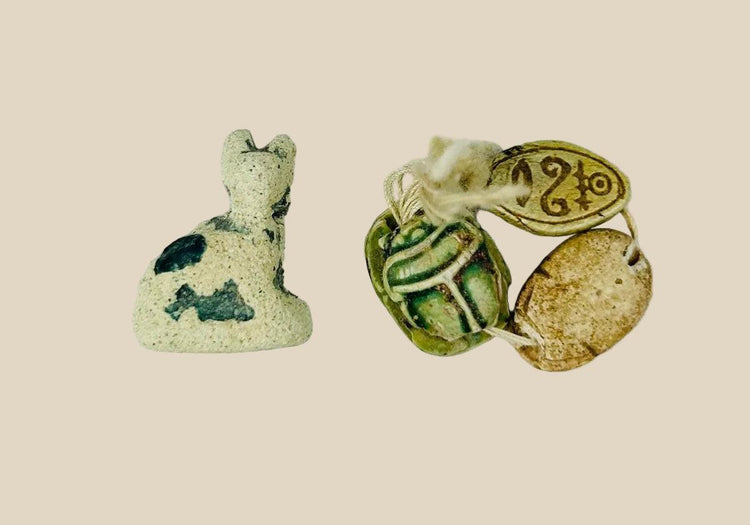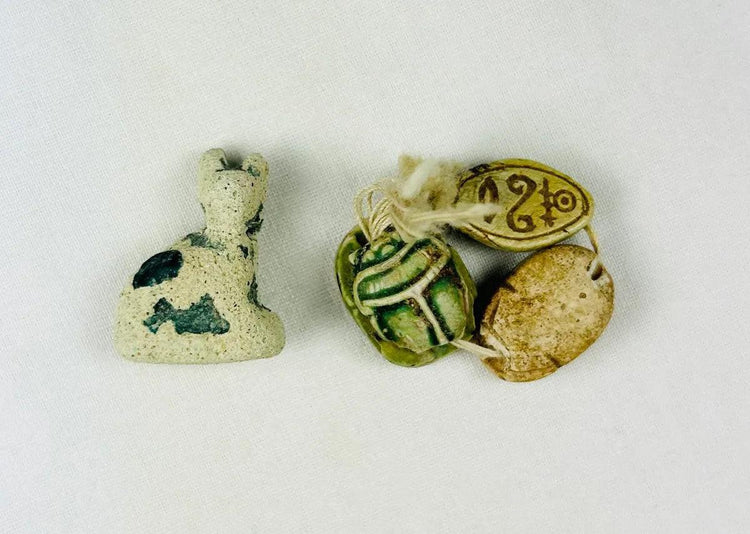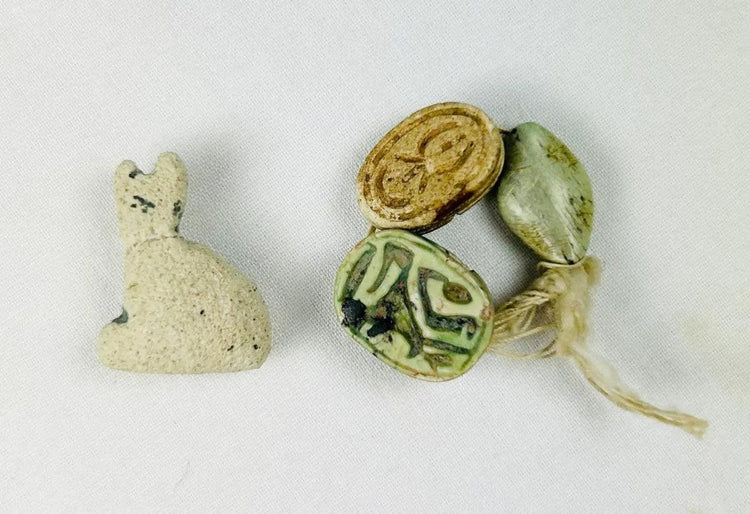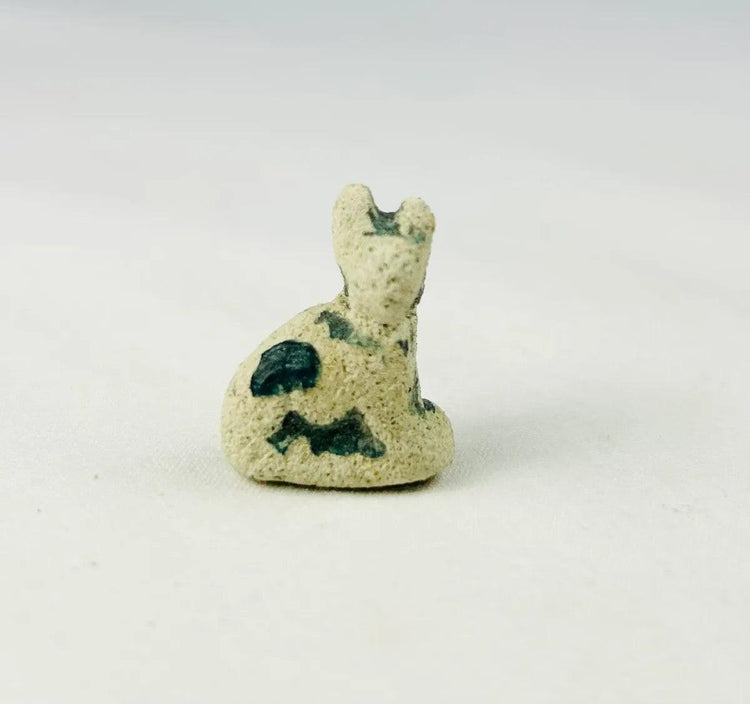Egyptian Amulet Collection | Bastet Cat in Faience & Three Scarabs | 600–200 BCE
Description
More
Less
Historical Context & Origin
Region: Ancient Egypt
Material: Faience, steatite (scarabs), glazed composition
Period: Late Period to Ptolemaic Period, circa 600–200 BCE
Description
This lot consists of two complementary examples of ancient Egyptian craftsmanship:
-
Faience Cat Amulet – A finely modeled amulet in the form of a seated cat, representing Bastet, the goddess of home, fertility, and protection. The piece retains areas of its original blue-green glaze, now worn with age, lending the surface a textured, earthen quality. Cats were revered in ancient Egypt, and amulets such as this were worn to safeguard the bearer from misfortune and to invoke divine blessing.
-
Group of Three Scarabs – A collection of three scarabs in varied materials and states of preservation. One is incised with hieroglyphs on its base, another is glazed green with linear decorative patterns, and the third is a more worn example. Scarabs symbolized rebirth, regeneration, and protection, while their incised undersides reflect both ritual and administrative functions in ancient society.
Features
- Authentic faience amulet in the form of Bastet, seated cat goddess
- Three scarabs with distinct characteristics: hieroglyphic base, glazed green decoration, and a worn specimen
- Fine incised details and original glaze traces preserved
- Mounted or strung for study and display
Cultural Significance
The cat amulet embodies the protective power of Bastet, a goddess deeply tied to fertility, domestic harmony, and divine guardianship. Scarabs, associated with the sun god Ra and the eternal cycle of rebirth, were the most common and enduring amulets of ancient Egypt. Together, these pieces reflect personal devotion, spiritual belief, and the symbolic artistry of ancient Egyptian daily and funerary life.
Condition
-
Cat amulet: Intact, with encrustations and glaze loss consistent with antiquity
-
Scarabs: Varying preservation, from sharp incised detail to softened surfaces; some retain traces of glaze. All display age-appropriate wear
Dimensions (approximate)
Height (cat amulet): 0.75 in
Length (scarabs): 0.6–0.8 in each
Age
Circa 600–200 BCE
Description
Historical Context & Origin
Region: Ancient Egypt
Material: Faience, steatite (scarabs), glazed composition
Period: Late Period to Ptolemaic Period, circa 600–200 BCE
Description
This lot consists of two complementary examples of ancient Egyptian craftsmanship:
-
Faience Cat Amulet – A finely modeled amulet in the form of a seated cat, representing Bastet, the goddess of home, fertility, and protection. The piece retains areas of its original blue-green glaze, now worn with age, lending the surface a textured, earthen quality. Cats were revered in ancient Egypt, and amulets such as this were worn to safeguard the bearer from misfortune and to invoke divine blessing.
-
Group of Three Scarabs – A collection of three scarabs in varied materials and states of preservation. One is incised with hieroglyphs on its base, another is glazed green with linear decorative patterns, and the third is a more worn example. Scarabs symbolized rebirth, regeneration, and protection, while their incised undersides reflect both ritual and administrative functions in ancient society.
Features
- Authentic faience amulet in the form of Bastet, seated cat goddess
- Three scarabs with distinct characteristics: hieroglyphic base, glazed green decoration, and a worn specimen
- Fine incised details and original glaze traces preserved
- Mounted or strung for study and display
Cultural Significance
The cat amulet embodies the protective power of Bastet, a goddess deeply tied to fertility, domestic harmony, and divine guardianship. Scarabs, associated with the sun god Ra and the eternal cycle of rebirth, were the most common and enduring amulets of ancient Egypt. Together, these pieces reflect personal devotion, spiritual belief, and the symbolic artistry of ancient Egyptian daily and funerary life.
Condition
-
Cat amulet: Intact, with encrustations and glaze loss consistent with antiquity
-
Scarabs: Varying preservation, from sharp incised detail to softened surfaces; some retain traces of glaze. All display age-appropriate wear
Dimensions (approximate)
Height (cat amulet): 0.75 in
Length (scarabs): 0.6–0.8 in each
Age
Circa 600–200 BCE
You May Also Like

















